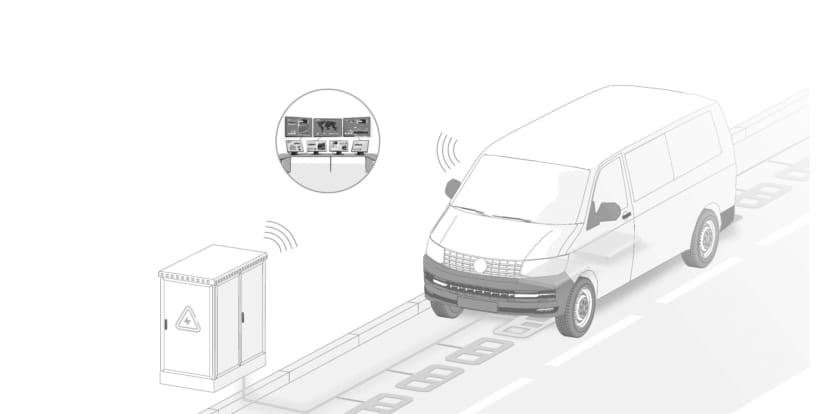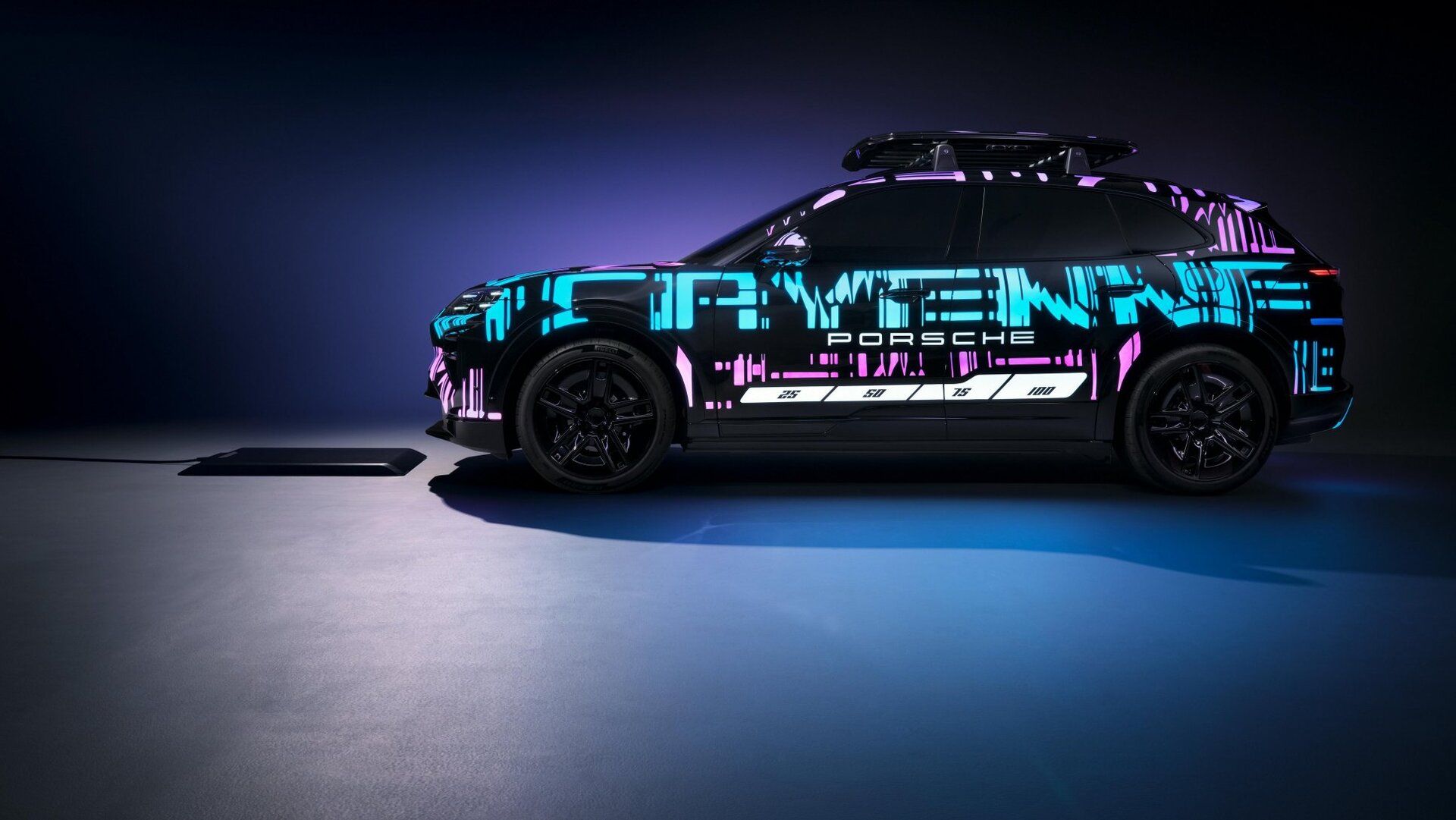- #movingpeople
- Posts
- #movingpeople meets Electreon
#movingpeople meets Electreon
Vehicle Wireless Charging is a Reality. Same as charging a phone, but bigger.
Electreon’s wireless charging solution allows for charge-as-you-drive (think BRT, bus lanes, hub-to-hub) and depot charging (logistic fleets, buses) scenarios, allowing anything from a 25kW car charge to a 200kW lorry charge. Electreon’s solution works across Western & Northern Europe and the US, providing advantages in space usage and operational complexity.
#movingpeople is a part of Mobility Business - a consultancy dedicated to "All Things Mobility", focused on growth.
I joined Electreon to lead their UK/EU go-to-market. If what you read here is relevant, give me a shout.
Hello Charlie, Head of Global Business Strategy at Electreon. OK - wireless charging. From the top please - what is wireless charging and who is Electreon?
Wireless charging is, in essence, what it says: charging your car without plugging it in. If you’ve ever placed your phone or smartwatch on a wireless pad, it’s the same principle, just scaled up for vehicles. The end result is identical to conventional charging – the sort you’d get at home or at a public charging point.
At Electreon, we can wirelessly charge anything from a small car at 25kW to a lorry at 200kW, whether the vehicle is parked up or driving along. Static charging is ideal for depots and logistics yards, where vehicles can top up while parked, loading or unloading. Dynamic charging - or “charge as you drive” - works brilliantly for things like bus lanes, BRT corridors, or middle-mile logistics, where the route is fixed.
It’s all fairly straightforward to set up: we install the infrastructure - coils 10cm beneath the road surface and the management units that run them; fit the vehicle with our receiver, and you’re good to go.
This is a lot to take in. I know it was for me when I was first introduced to Electreon. We’ll get back to how it's implemented, but let’s first talk about the company and how it all started.
Electreon was founded back in 2013 by Oren Ezer and Hanan Rumbak, both aerospace engineers. At the time, electric vehicles were only just moving from concept to reality, and the industry was grappling with massive batteries to achieve any sort of range. Oren and Hanan revisited an idea from none other than Nikola Tesla, who’d demonstrated wireless power transfer as far back as 1891.
What sets us apart is that we began with dynamic charging from day one. That matters for two reasons: firstly, it makes our solution the most advanced in the market, and secondly, it’s much easier to adapt dynamic charging for static situations than the other way round.
Our first pilot was in Sweden, in partnership with the PTO “Trafikverket”, running from 2018 through 2023. It was a one-mile test road that powered both a truck and a bus as they drove. Our second pilot came in Tel Aviv in 2020, again over a mile - but this time we proved that we can lay the entire strip, and resurface, in a single night.
And where is Electreon today?
Today we’re active across the US, France, Italy, Germany and the Nordics, more than 30 projects worldwide. We’ve got a commercial bus depot running in Tel Aviv, and we’re charging buses in both Germany and Sweden, under all weather conditions. In the US we’re working with UPS, among other major logistics fleets, and also with autonomous vehicle programmes. And next month, we’re cutting the ribbon on a new dynamic wireless project on the A10, just outside Paris.
Wireless charging brings several advantages. Because all the kit is underground, it saves space, removes the risk of chargers being damaged or vandalised, and automates the process so you don’t end up with vehicles left uncharged because someone forgot to plug in.
On the software side, we can schedule charging during off-peak tariffs, prioritise certain vehicles based on timetables, and give depot managers a dashboard to see what’s happening in real time. And in terms of total cost of ownership, our solution is on par with other commercial charging options.
Let’s get back to the nitty gritty of how it's implemented.
The energy is transferred through coils buried just 10cm below the surface. It’s standard DC electricity, tied into the existing grid just like any other charging infrastructure. We’ve shown that we can lay it in a single night, including digging and roadworks.
A management unit – which can sit above or below ground – controls the charging regime. Then there’s our software system, which allows smart rules, such as off-peak charging or vehicle prioritisation.
Finally, you’ve got the receiver, mounted on the chassis of the vehicle, which takes in the energy.
The receiver is the tough part, isn’t it? Wireless charging is not something that comes off the OEM production line; vehicles today aren’t pre-fitted with receivers.
That’s right. Until the industry gets to the point where new models are fitted as standard – as Porsche has already started doing – our focus is on commercial fleets: buses, logistics and AVs. Where we see the immediate demand..
We work with over 20 OEMs already – Toyota, Ford, Iveco, to name a few – so we know how to integrate with many models. If we do come across a new one, it takes us about three months to engineer the fit with the OEM. The installation itself is quick – a matter of hours – so that’s not a barrier.
Tell me about the recent announcements, with ATLoS and Eurabus.
Yes, very exciting. We’ve just signed with ATLoS, part of Portugal’s CME Group. They’re an autonomous vehicle OEM focused on logistics trucks and the first project is in a Continental facility. For AVs, wireless charging is a no-brainer: it cuts out staff time, eliminates mistakes, saves space and removes any risk of accidents involving charging infrastructure. ATLoS sees it exactly as we do, which is why the partnership makes sense.
We’ve also partnered with Eurabus, a German bus OEM. With buses there are a few strong use cases: depot charging, end-station charging, and on-route charging. For example, adding wireless charging at end bus stations alone, where the bus stops for 5 mins each trip, could give you an extra 7 kilometres of range per trip, which really adds up over a service day.
You mentioned partnerships with two European based OEMs. That leads me to a question I frequently ask people I interview - what is your take on the US versus Europe? In terms of adoption.
Because we’re talking about EVs, Europe’s definitely ahead in terms of adoption – more forward-thinking, with stronger regulatory push. That said, when it comes to innovation, the US is on par with Europe. There’s just as much government money going into pilots and new tech. We’re making progress with slightly different approaches in both markets, which is encouraging.
What’s on your Electreon’s roadmap?
We’re focused on improving both dynamic (on-road) and static (depot) solutions. On the dynamic side, we’re soon launching a 70kW receiver on the A10 in France – double our current capacity. For a heavy-duty vehicle, that translates to 210kW.
On the static side, we will be introducing a 50kW receiver, again double our current output. For a commercial van, that means up to 100kW charging.
And next year, we’re rolling out a new home charger kit at 11kW. It’s aimed at also solving a real challenge for people with disabilities, who can find plugging in physically difficult.
Advice to other founders?
Two things. First, always follow the data. Use numbers to make decisions, especially when you’re testing product-market fit. Gut instinct can be fine if you’ve got years of experience, but most startups are venturing into new territory – and gut feeling can be misleading.
Second, make sure you’ve actually got a paying market. There are plenty of “trial” clients who’ll happily trial your tech if it doesn’t cost them anything. But they’re not your customer, and they won’t get you to scale.
Any final thoughts?
Wireless charging for cars is gathering pace, which is thrilling to watch. Porsche has already started rolling out vehicles with wireless capability built in, and every other premium OEM is preparing to follow suit between 2028 and 2030. That’s going to be a huge turning point.
Mass-market OEMs will then follow, and by 2035 – which sounds far away, but is only 10 years out – we expect every new car to have wireless charging built in.
#movingpeople is a weekly mobility & delivery newsletter - from Ride-Hailing & Robotaxi through Remote-Driving & Delivery Drones to e-bikes and Autonomous Freight & Logistics.
Thank you for reading. If you like what you're reading, please share it with your friends and colleagues so they can benefit from it too.




